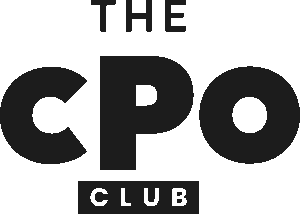If you’re a product manager, you’re likely familiar with the challenge of defining your product vision and prioritizing the right product features. With so many product management software options—ranging from roadmapping tools to task management platforms—it can be tough to pinpoint the best fit for your team’s workflow and goals.
Each solution brings unique functionality to the table, supporting different stages of the product development process, from ideation to launch. By understanding these distinctions, you’ll be better equipped to select a platform that aligns with your product strategy, supports collaboration, and streamlines how your team members turn product ideas into outcomes.
Let’s dive into the types of product management software and explore what they have to offer.
What Is Product Management Software?
Product management software helps product teams plan, develop, and deliver better products through centralized collaboration and execution. These platforms support daily work by organizing workflows, surfacing key metrics, tracking milestones, and keeping cross-functional teams aligned.
Whether you’re managing sprints, running experiments, or collaborating across tools like Jira, Confluence, Figma, or Slack, the right solution can accelerate teamwork and improve outcomes.
P.S., It’s worth noting that product planning software — used at the earliest stages for vision-setting, research, and high-level prioritization — is slightly different. This article focuses on the tools you’ll use once you’re ready to turn strategy into roadmaps, execution, and delivery.
Now that we're aligned on what product management software does, let's look at the different types—so you can choose the best product management tools for your team.
1. Roadmapping Software
Roadmapping software allows product teams to visualize initiatives, track progress, and align strategy with execution. It’s designed to help you prioritize features, communicate timelines, and connect high-level goals to day-to-day tasks. With customizable templates, clear visualizations, and integrations with tools like Jira, Trello, and Confluence, it keeps your stakeholders, development team, and designers on the same page.
By providing a shared view of your product roadmap, this type of software supports real-time collaboration, improves team alignment, and reduces the friction of shifting priorities. It’s especially useful for managing complex initiatives, setting milestones, and driving your product strategy forward.
Roadmapping Software Benefits
The main benefit of roadmapping tools is visibility—both into the big picture and the execution details. Whether you’re planning a new product, adjusting to customer feedback, or syncing across sprints, a well-structured roadmap helps ensure focus and clarity.
What I’ve learned is you cannot afford to play the game of telephone with strategy. You really need continuity end-to-end, so everyone—from the CEO down to the ICs—understands the trade-offs and what you’re not going to do. Without that clarity, you lose focus and execution starts to drift.
—Matthew Wensing, Head of Product & Design at Customer.io
Unlike general project management tools, roadmapping platforms are purpose-built for product development. They help you stay adaptable, meet deadlines, and drive smarter decision-making by connecting long-term vision with day-to-day execution.
Roadmapping Software Features
Essential Features
- Visual roadmap creation with a drag-and-drop interface
- Milestone tracking and prioritization tools
- Collaborative workspace and shareable roadmaps
- A variety of templates and customizable layouts
- Basic analytics and reporting
- Integration with project management tools
Advanced Features
- Integration with development tools, API access
- Unlimited roadmaps with customizable layouts
- Secure access controls
- Export functionality to PDF or PNG
- Scenario planning
- Release planning
- Product lifecycle management
2. Idea Management Software
Idea management software helps product teams collect, evaluate, and implement product ideas more effectively. It creates a centralized space for team members, stakeholders, and even customers to contribute suggestions, review options, and drive informed product decisions. By supporting structured ideation, this type of software helps you prioritize what to pursue and ensures valuable input doesn’t get buried in spreadsheets, emails, or Slack threads.
With support for collaboration tools, real-time commenting, and progress tracking, idea management platforms streamline your workflow from initial concept through execution. Many also integrate with tools like Jira, Miro, Confluence, and Productboard, allowing seamless movement from idea to feature.
Idea Management Software Benefits
The core benefit of idea management tools is their ability to enhance innovation while aligning with your product strategy. They make it easier to capture user feedback, organize themes based on customer needs, and evaluate ideas using repeatable frameworks. Compared to broader product management software, these platforms are purpose-built for brainstorming, early-stage exploration, and turning insights into actionable initiatives.
By removing friction from the ideation process and promoting cross-functional team collaboration, idea management software leads to faster decision-making, more creative solutions, and a stronger foundation for your product development roadmap.
Idea Management Software Features
Essential Features
- Idea management
- Resource allocation
- Budget creation
- Feature planning
- Team collaboration tools
- Document management
- Roadmap planning
- Task management and assignment
- Integration with other business tools
Advanced Features
- Advanced AI-driven insights
- In-depth analytics and reporting capabilities
- Public-facing release notes portals
- Efficient invoicing and budget tracking systems
- Comprehensive mobile app functionality
- Customizable templates and project setups
3. Product Analytics Software
Product analytics software helps product teams understand how users interact with your product across the entire user journey. By focusing on user behavior, feature adoption, and engagement patterns, these tools surface the metrics that matter—empowering your team to make smarter, data-driven decisions.
Whether you’re analyzing friction points in your onboarding flow or measuring the impact of a recent feature release, product analytics platforms like Amplitude, Mixpanel, or Productboard provide visibility into what’s working—and what’s not. This allows you to continuously optimize your user experience, align decisions with your product strategy, and track progress toward key outcomes.
With real-time dashboards, customizable funnels, and integrations with tools like Jira, Figma, and GitHub, these platforms support rapid iteration and help development teams build with clarity and focus.
Product Analytics Software Benefits
The primary feature of product analytics tools lies in their ability to turn raw usage data into actionable insight. By making it easier to understand user behavior, segment by customer needs, and spot patterns across your workspace, these tools lead to faster feedback loops and more effective product development.
Compared to broader project management software or generic analytics tools, product analytics platforms are purpose-built for software development teams who want to iterate faster, reduce guesswork, and deliver the right product at the right time.
Product Analytics Software Features
Essential Features
- Goal setting and OKRs
- Roadmapping
- Project management
- Task scheduling & tracking
- Customer feedback management
- Prioritization
- Messaging
Advanced Features
- AI assist tools
- A/B testing
- Competitive intelligence monitoring
- Reusable personas
- Internal communications automation
- Integrated GPT-3 workflows
- Data export
4. User Feedback Software
User feedback software helps product teams gather, analyze, and act on input from customers, users, and internal stakeholders. Whether you’re validating product ideas, identifying pain points, or refining functionality, these tools help you stay aligned with real-world customer needs. Through built-in tools for surveys, polls, and in-app feedback, they support fast, structured insight collection across your workspace.
By surfacing direct signals from your users—such as friction in the user interface or feature gaps—these platforms empower better product decisions, improve collaboration between team members, and reduce reliance on assumptions during the product development process.
User Feedback Software Benefits
The biggest advantage of user feedback software is its ability to bridge the gap between your team’s intent and your users’ reality. It helps you prioritize updates based on what people actually want—supporting a data-driven, iterative approach to product development.
These platforms are built specifically for listening and learning. They help you uncover valuable use cases, improve both front-end and back-end experiences, and ultimately build the right product with confidence. For fast-moving teams and startups, they’re critical to building with speed and accuracy.
User Feedback Software Features
Essential Features
- Feedback collection
- User feedback portal
- Integration capabilities
- Analytics and reporting
- Task and workflow management
- Idea management
- Notifications and alerts
- User segmentation
- Feature voting
Advanced Features
- Portal white-labeling
- Detailed data and authentication controls
- CRM and support platform integrations
- Interactive product roadmaps
- Feature prioritization matrix
- Beta modes for early feedback
- Competitive analysis
- Mockups and prototyping
- Backlog management
- Idea scoring
5. Feature Prioritization Software
Feature prioritization software helps product teams decide what to build next by ranking features based on business impact, user value, and development effort. These tools bring structure to the chaos of competing inputs—organizing user feedback, synthesizing data from tools like Jira or Productboard, and aligning decisions with your overall product strategy.
By applying structured frameworks and methodologies like RICE, MoSCoW, or Value vs. Effort, prioritization tools help you streamline your product development process and make sure that your development team is focused on the highest-impact work. Many tools also offer integrations with collaboration tools like Slack, Confluence, and monday.com, making it easier to keep team members and stakeholders in sync.
Feature Prioritization Software Benefits
The primary benefit of feature prioritization software is clarity—it helps you prioritize work based on evidence, not opinions. By combining feedback management, internal insights, and quantifiable metrics, these tools support data-driven decisions that improve both functionality and user experience.
These platforms are purpose-built for product management, supporting team collaboration, surfacing dependencies, and ensuring that your roadmap reflects both customer needs and business objectives. Whether you’re iterating on a new product or refining an existing one, prioritization tools help you build the right product, faster.
Feature Prioritization Software Features
Essential Features
- Goal setting and OKRs
- Project management
- Task scheduling & tracking
- Customer feedback management
- Prioritization
- Idea management
- Resource allocation
- Budget creation
- Team collaboration tools
- Document management
Advanced Features
- Advanced AI-driven insights
- In-depth analytics and reporting capabilities
- Public-facing release notes portals
- Efficient invoicing and budget tracking systems
- Comprehensive mobile app functionality
- Collaboration tools with file sharing and real-time editing
- Customizable templates and project setups
6. Backlog Management Tools
Backlog management tools help product teams stay organized by structuring and prioritizing the flow of work across the product development process. These tools allow you to track tasks, manage dependencies, and ensure nothing gets lost—especially as your backlog grows more complex across sprints, feature requests, and customer feedback.
Often integrated with project management tools like Jira, Trello, Asana, and monday.com, backlog tools support team collaboration and visibility. With built-in dashboards, kanban boards, and tagging systems, they make it easier to assign tasks, monitor status, and keep your workflow moving without bottlenecks.
Backlog Management Tool Benefits
Backlog tools increase alignment by helping teams prioritize work, track issues, and manage task management at scale. They enable faster decision-making by surfacing blockers and clarifying ownership, while also supporting better communication between front-end and back-end contributors.
Compared to broader product management platforms, these tools focus specifically on keeping the development team aligned, the product roadmap on track, and the execution side of your strategy running smoothly. When used well, they reduce noise, improve teamwork, and help deliver the right product with fewer surprises.
Backlog Management Tool Features
Essential Features
- Task management
- Roadmapping
- Project management
- Task scheduling & tracking
- Customer feedback management
- Prioritization
- Notifications
Advanced Features
- User feedback portal
- Feature prioritization matrix
- Third-party integration
- Team collaboration tools
- Analytics and reporting
- Idea management
- User segmentation
Top 10 Product Management Software
Here are our top picks of the best product management software, to help you in your search:
What’s Next:
If you're in the process of researching product management software, connect with a SoftwareSelect advisor for free recommendations.
You fill out a form and have a quick chat where they get into the specifics of your needs. Then you'll get a shortlist of software to review. They'll even support you through the entire buying process, including price negotiations.




